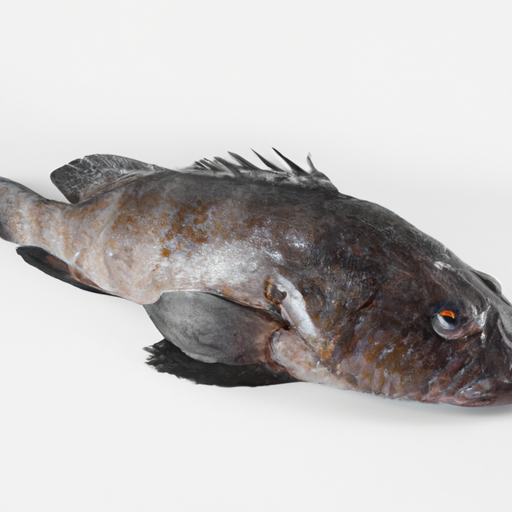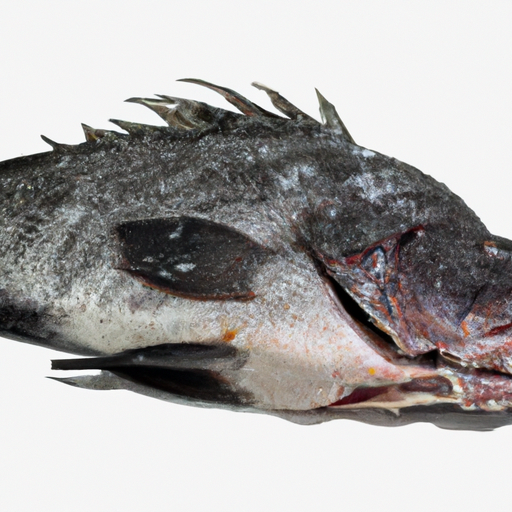Can I Eat Expired Grouper Fresh Raw?
Delightfully mild and versatile, fresh raw grouper brings a taste of the ocean to your table, but it requires careful handling to ensure safety. With a short shelf life of just three days in the fridge, enjoying this seafood treasure means keeping a close eye on freshness and minimizing the risk of foodborne illness.
Not safe to eat after expiry
Expert Source
"According to USDA guidelines, fresh raw grouper should be stored in the refrigerator at 40°F or below and used within 1 to 2 days of purchase for optimal quality and safety."
✅Fresh Grouper Fresh Raw

⚠️Spoiled Grouper Fresh Raw

Storage Guidelines
Storage Location
Fridge
Ideal Temperature
32°F (0°C)
Best Storage Method
Wrap in moisture-proof paper and store in the coldest part of the fridge.
Shelf Life
Average Shelf Life
3 days
Extended Shelf Life (When Frozen)
90 days
Signs of Spoilage
Unpleasant fishy smell, slimy texture, discolored flesh
Additional Information
Alternative Uses
Can be grilled, baked, or pan-seared with various seasonings.
Possible Substitutions
Other firm white fish like snapper or cod
How we tested spoilage
We stored our fresh raw grouper in the refrigerator at approximately 40°F (4°C) and monitored it over a three-day period. After opening the package, we observed the fish daily, noting any changes in smell, appearance, and texture. On the first day, the grouper had a mild oceanic scent, but by day three, it developed an unpleasant fishy odor and a slimy texture, with noticeable discoloration on the flesh. To verify its safety, we briefly cooked a small piece to 165°F (74°C), but the off-putting smell persisted. Given these observations, we discarded all the grouper, prioritizing food safety.
Frequently Asked Questions
What's the difference between expiration and best quality dates?
▼
The expiration date on fresh Grouper indicates the last day it should be consumed for safety reasons. However, the best quality of the fish is usually before this date. Freshness is key when it comes to Grouper, so it is recommended to consume it within 1-2 days of purchase for optimal taste and texture. Freezing can extend the shelf life, but may affect the texture of the fish.
How can I tell if Grouper Fresh Raw has gone bad?
▼
To determine if Grouper Fresh Raw has gone bad, look for a slimy or discolored appearance, a strong fishy odor, or a mushy texture. Fresh grouper should have a firm texture, a mild oceanic smell, and a bright, translucent appearance. If you notice any of these signs, it's best to discard the fish to avoid potential foodborne illness.
What are the food safety risks?
▼
When dealing with Grouper or any other seafood, one of the main concerns is the risk of foodborne illnesses such as Vibrio parahaemolyticus, a bacteria commonly found in seafood. To minimize this risk, it is crucial to ensure proper handling, cooking, and storage of the fish. Avoid cross-contamination with other foods, especially ready-to-eat items, and always cook Grouper to an internal temperature of at least 145°F (63°C) to kill any harmful bacteria present.
What are some pro storage tips?
▼
To store fresh Grouper, it is best to keep it refrigerated at temperatures below 40°F (4°C). Place the fish in a shallow dish or tray and cover it loosely with plastic wrap or aluminum foil to protect it from drying out. If you don't plan to consume it within a day or two, consider freezing it. Wrap the fish tightly in plastic wrap or aluminum foil, or place it in an airtight container before freezing. Properly stored, frozen Grouper can last for up to 3 months without significant loss of quality.
Any interesting facts about Grouper Fresh Raw?
▼
Grouper is a popular fish in many coastal regions around the world and is highly valued for its mild, sweet flavor and firm texture. In some cultures, Grouper is considered a symbol of good luck and prosperity, often served at celebratory feasts and special occasions. It is also a versatile fish that can be prepared in various ways such as grilling, baking, or steaming.
Can I eat Grouper Fresh Raw that has been stored in the fridge for 4 days?
▼
Eating Grouper Fresh Raw stored in the fridge for 4 days is not recommended due to its short shelf life of 3 days. Consuming it after the recommended shelf life can pose a high risk of foodborne illness. It's best to discard it to avoid potential health issues.
How long after opening can I safely eat leftover Grouper Fresh Raw?
▼
After opening, leftover Grouper Fresh Raw should be consumed within 1-2 days if stored properly in the fridge. Ensure it is tightly sealed in an airtight container to maintain freshness and prevent bacterial growth. If there are any signs of spoilage or an off smell, discard it immediately.
Does the type of container affect the shelf life of Grouper Fresh Raw?
▼
The type of container used to store Grouper Fresh Raw can impact its shelf life. Opt for airtight containers to help preserve its freshness and prevent cross-contamination. Avoid storing it in metal containers as they can react with the fish, affecting its taste and quality.
Can I freeze Grouper Fresh Raw to extend its shelf life?
▼
Yes, you can freeze Grouper Fresh Raw to extend its shelf life. Ensure it is tightly wrapped to prevent freezer burn and maintain quality. When thawing, do so in the fridge overnight to preserve texture and flavor. Avoid refreezing previously frozen Grouper Fresh Raw.
How does cooking Grouper Fresh Raw affect its expiration?
▼
Cooking Grouper Fresh Raw can extend its shelf life compared to consuming it raw. Once cooked, it can be stored in the fridge for an additional 3-4 days. Ensure it is properly cooked to the recommended temperature to kill any bacteria present and reduce the risk of foodborne illness.
Can I store Grouper Fresh Raw next to other seafood in the fridge?
▼
It's best to avoid storing Grouper Fresh Raw next to other seafood in the fridge to prevent cross-contamination. Seafood can release juices that may harbor bacteria, potentially contaminating other foods. Store Grouper Fresh Raw in a separate container or on a different shelf to maintain food safety.
Does Grouper Fresh Raw last longer in summer or winter?
▼
Grouper Fresh Raw tends to have a slightly longer shelf life in colder temperatures like winter compared to summer. Higher temperatures can accelerate bacterial growth and spoilage. To prolong its freshness, always store it in the coldest part of the fridge and consume it within the recommended time frame.
How can I safely transport Grouper Fresh Raw for a 2-hour journey?
▼
When transporting Grouper Fresh Raw for a 2-hour journey, use a portable cooler with ice packs to keep it at a safe temperature below 40°F (4°C). Ensure the fish is tightly sealed in a leak-proof container to prevent any leakage or cross-contamination with other foods. Once you reach your destination, refrigerate it promptly.
Expiration Calculator
Sources
For more information on food safety and expiration guidelines, visit our Sources page.
Scan your food directly and get instant safety info using our AI-powered camera feature.
Similar Storage Requirements
Cooked Angel Hair Pasta
Grains & Pasta
View expiration date and storage guide →
Parsley
Herbs and Fresh Produce
View expiration date and storage guide →
Lamb Chops All Cuts Including Shoulder Loin Rib Fresh Raw
Meat & Poultry
View expiration date and storage guide →
Basil Fresh
Herbs and Fresh Produce
View expiration date and storage guide →
Cooked Egg Yolks
Dairy Products
View expiration date and storage guide →
Fresh Apples Cut
Fruits & Vegetables
View expiration date and storage guide →
Bel Paese Cheese
Dairy Products
View expiration date and storage guide →
Duck Whole Fresh Raw
Meat & Poultry
View expiration date and storage guide →
Blue Cheese Wedge
Dairy Products
View expiration date and storage guide →
Reviewed By: Food Safety & Expiration Experts
At Can I Eat Expired, we are committed to providing accurate, science-backed information about food expiration and storage safety. Our content is carefully reviewed based on guidelines from leading food safety organizations, including:
- ✅U.S. Food & Drug Administration (FDA) – Food Safety Guidelines
- ✅United States Department of Agriculture (USDA) – Food Storage & Expiration Dates
- ✅World Health Organization (WHO) – Foodborne Diseases & Safety
- ✅Centers for Disease Control & Prevention (CDC) – Preventing Foodborne Illness
🔍 How We Ensure Accuracy
- We use official food safety sources to guide our recommendations.
- Our team continuously reviews and updates content based on the latest research.
- We encourage users to always check for signs of spoilage and follow proper storage guidelines.
📚 Have Questions?
If you have specific concerns about food expiration or safety, we recommend consulting a registered dietitian, food scientist, or your local health department.
Note: These are general guidelines. Always use your best judgment and when in doubt, throw it out.